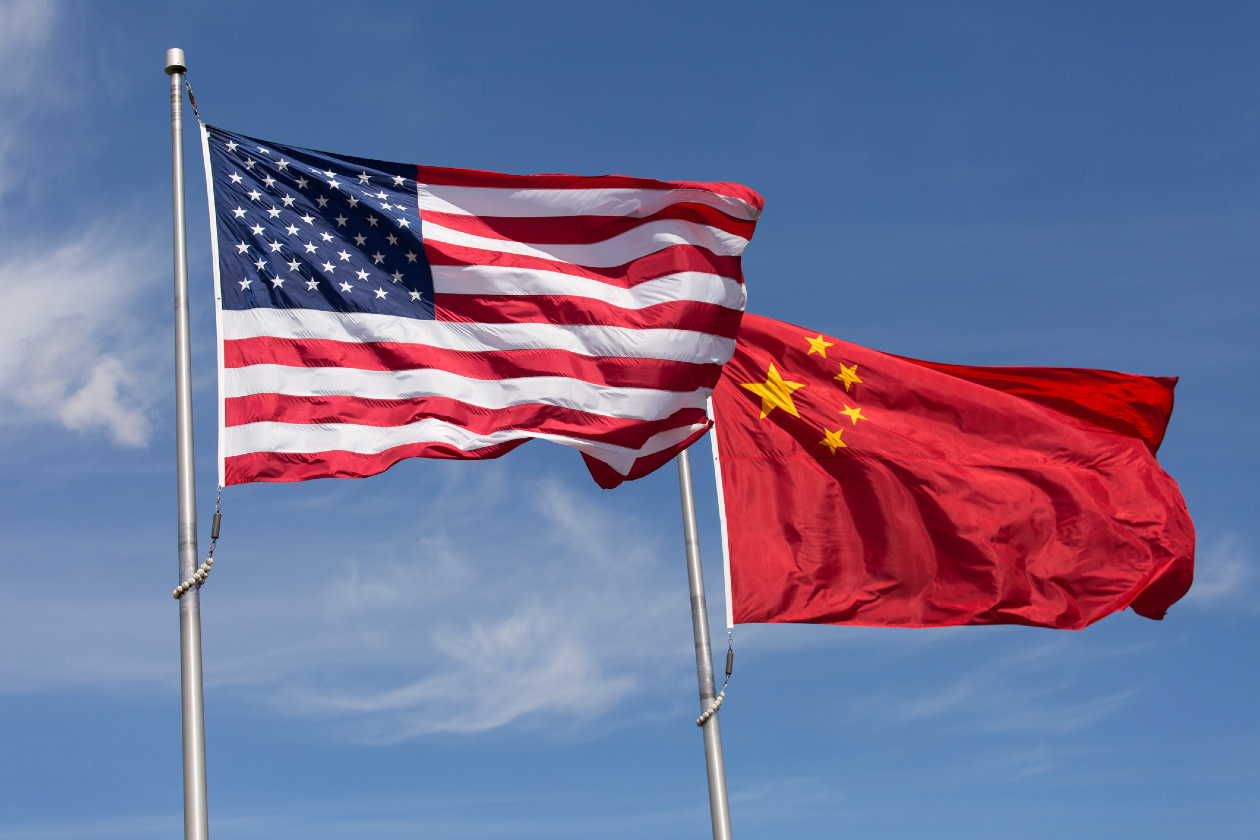Recent headlines have been dominated by US President Donald Trump’s tariff policy and the effects it could have on global trade.
While most tariffs are currently on a 90-day pause, news about potential trade deals and/or retaliatory tariffs continues to reverberate around financial markets.
However, tariffs aside, there have also been some key events taking place across the Asia and Pacific regions.
In April, the Reserve Bank of India cut interest rates for the second time this year as gross domestic product (GDP) growth estimates for 2025 dropped from 6.7% to 6.5%.
Australia held its general election, which saw incumbent Anthony Albanese become the first prime minister in over 20 years to win re-election.
China’s annual National People’s Congress took place, where it set the goal of 5% economic growth for the year. The country also announced plans to invest over £100bn in the technology sector as it bids to move to the forefront in areas like artificial intelligence (AI).
This article isn’t personal advice. If you’re not sure an investment is right for you, ask for financial advice. Remember, all investments and any income from them can rise and fall in value, so you could get back less than you invest. Past performance also isn’t a guide to the future.
The impact of tariffs on Asia and emerging markets
On 2 April, Trump announced a wave of new global tariffs, with a baseline of 10% for each country – this was calculated based on the size of the trade surplus each country runs with the US.
Countries in Asia and emerging markets were hit with some of the highest tariff rates.
This included 26% for India, 30% for South Africa and 46% for Vietnam.
On 9 April, rates were cut to 10% following poor reaction from financial markets.
China, with whom Trump began a trade war in 2017 during his first term in office, got hit with a tariff increase of 145% as a result of their retaliation. At the time of writing, this rate has dropped to 30% following some constructive talks between the two countries.
Asian countries tend to have lower costs of production and so are global manufacturing hubs for products ranging from electronics to clothing. Manufacturing is crucial to developing economies, accounting for 19.8% of Indonesia’s GDP and 27.0% in Thailand.
As a result, disruption to the sector and supply chains will likely have a large impact on the growth of these countries.
The temporary pause on tariffs is allowing countries to negotiate trade deals with the US. But there’s still a large degree of uncertainty on trade and the impact this could have on the future prospects of emerging nations.
How have stock markets fared?
Asia and emerging markets saw mixed results over the 12 months to April 2025.
The MSCI Emerging Markets index rose 2.74%* over the year while MSCI AC Asia Pacific ex Japan finished 3.94% higher. In emerging markets, financials and consumer discretionary companies were among the best performing.
China was the strongest performer, with MSCI China gaining 18.55% - investment sentiment jumped following the government outlining plans to boost the economy.
MSCI India dropped 1.22% over the year to April 2025. The market fell in the first part of 2025 as investors withdrew money from the country following a period of strong returns.
Emerging markets outside Asia were the weakest performers. MSCI EM Latin America fell 9.77%, with both Brazil and Mexico performing poorly.
In Europe, MSCI Turkey lost 28.14% with a sharp drop in the market following political unrest in March.
Annual percentage growth
April 2020 To April 2021 | April 2021 To April 2022 | April 2022 To April 2023 | April 2023 To April 2024 | April 2024 To April 2025 | |
|---|---|---|---|---|---|
MSCI Emerging Markets | 35.93% | -9.64% | -6.20% | 10.75% | 2.74% |
MSCI AC Asia Pacific ex Japan | 35.68% | -9.23% | -5.21% | 8.29% | 3.94% |
MSCI China | 24.94% | -29.55% | -5.75% | -6.24% | 18.55% |
MSCI India | 37.56% | 29.42% | -6.57% | 35.40% | -1.22% |
MSCI EM Latin America | 33.75% | 14.80% | 5.45% | 16.36% | -9.77% |
MSCI Brazil | 35.00% | 11.76% | -2.23% | 18.80% | -10.84% |
MSCI Mexico | 42.69% | 22.19% | 25.51% | 11.36% | -13.02% |
MSCI Turkey | -7.67% | 18.01% | 36.82% | 44.53% | -28.14% |
Receive expert fund insights direct to your inbox every week, including research, investment articles and in-depth sector reviews.
How have Wealth Shortlist funds performed?
Results have varied for the Asia and emerging markets funds on the Wealth Shortlist over the past 12 months.
This is expected though as fund managers have different investment styles and areas of focus.
Investing in funds isn't right for everyone. Investors should only invest if the fund's objectives are aligned with their own, and there's a specific need for the type of investment being made. Investors should understand the specific risks of a fund before they invest, and make sure any new investment forms part of a long-term diversified portfolio.
If you’re looking to invest in emerging markets, a fund that offers wide exposure to Asia or a global emerging markets fund could be a good option.
Just remember, investing in these areas typically comes with higher levels of risk than more established markets.
For more details on each fund and its risks including charges, see the links to their factsheets and key investor information below.
FSSA Asia Focus
The best-performing fund on the Wealth Shortlist over the year was FSSA Asia Focus. The fund returned 3.13%* in the 12 months to April.
This trails the MSCI AC Asia Pacific ex Japan benchmark return of 3.94% but is ahead of the average fund in the IA Asia Pacific ex Japan sector, which returned 0.51%.
FSSA Asia Focus has been managed by Martin Lau since the fund launched in 2015. Lau’s supported by deputy manager Rizi Mohanty, who was appointed in 2024 having been part of the wider team since 2016.
The fund invests across Asia in countries like China, India and Taiwan. It looks for companies with reputable management teams and a strong brand that allows them to set prices without affecting consumer demand.
Over the past year, the fund’s investments in India contributed positively to performance, as did the choice of technology companies.
Remember though, investing in emerging markets increases risk.
Stewart Investors Indian Subcontinent All Cap
Stewart Investors Indian Subcontinent All Cap was the weakest Wealth Shortlist fund over the past 12 months.
During this time the fund fell 6.36%, which was a larger fall than the 1.22% of the MSCI India benchmark. The fund also lagged the IA India/Indian Subcontinent sector, where the average fund lost 1.61%.
The fund has been managed by Sashi Reddy since 2012. David Gait serves as deputy manager and has been involved with the fund since 2007.
The fund managers have built a concentrated fund of companies from the Indian Subcontinent that they believe have some of the best financial strength and growth prospects in the market.
The managers currently invest more than the benchmark in Industrials companies. But our analysis suggests that stock selection in this sector has been a detractor to performance over the past year.
The fund’s larger allocation to small and medium-sized companies was also a detractor, as this part of the market underperformed. Although their stock selection in this area was strong.
Investors should note that investing in a single emerging market and smaller companies is a higher-risk approach.
This fund also has one of the highest ESG risk profiles of funds under our research coverage. The companies within the fund could therefore face increased regulatory scrutiny, reputational damage, and operational challenges, potentially impacting the fund's future performance.
Annual percentage growth
April 2020 To April 2021 | April 2021 To April 2022 | April 2022 To April 2023 | April 2023 To April 2024 | April 2024 To April 2025 | |
|---|---|---|---|---|---|
FSSA Asia Focus | 28.75% | -3.50% | 1.09% | -2.58% | 3.13% |
IA Asia Pacific Excluding Japan | 38.57% | -8.26% | -4.19% | 4.94% | 0.51% |
Stewart Investors Indian Sc All Cap | 45.65% | 22.81% | 1.39% | 22.08% | -6.36% |
IA India/Indian Subcontinent | 37.18% | 23.78% | -3.62% | 31.95% | -1.61% |
Open a new HL Stocks and Shares ISA or SIPP today and enjoy 40% off your account charge
Open your ISA or SIPP and add at least £10,000 (including cash and/or transfers) by 30 June 2025
The 40% discount applies between 1 July and 31 December 2025
If you're transferring, your reduced charge will start once your transfer completes, and continue until 31 December 2025
Need more time to apply to transfer? Contact our Helpdesk.
Important: This offer reduces the HL account charge. Our standard account charge is no more than 0.45% a year. Other investment charges may still apply. Buying and selling funds is free. Share and ETF dealing charges apply. See the full ISA offer terms and SIPP offer terms.





